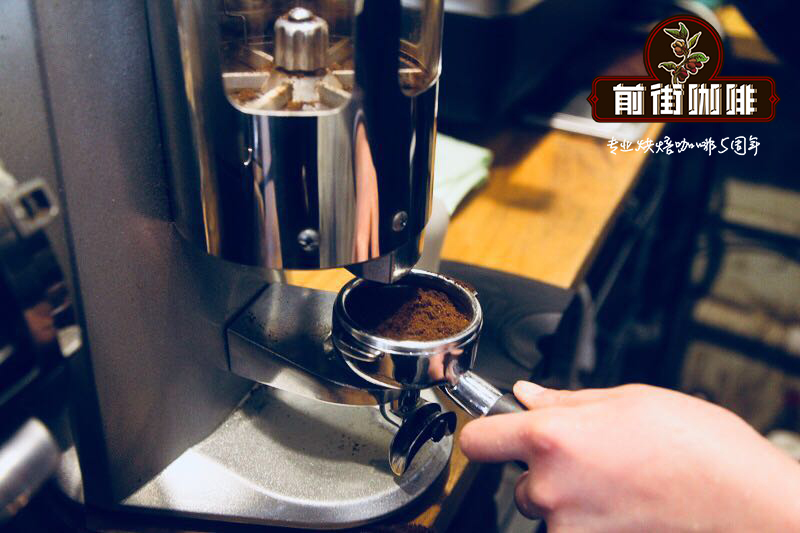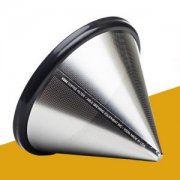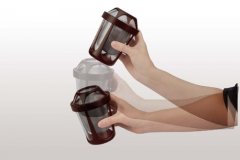What is the type and principle of the coffee machine? How to maintain and buy coffee machine

Professional coffee knowledge exchange more coffee bean information please follow the coffee workshop (Wechat official account cafe_style)
Semi-automatic
Semi-automatic coffee machine, commonly known as handle machine, is a traditional Italian coffee machine. This kind of machine grinds, presses, loads, brews and removes the residue manually according to manual operation. These machines include small household machines with single faucets, large commercial machines with double faucets and three faucets, etc., and the newer machines are also equipped with electronic water control, which can accurately and automatically control the amount of coffee brewing.
This kind of machine is mainly produced in Italy and is very popular in Italy. Its main features are: simple machine structure, reliable work, easy maintenance, according to the correct method of use can produce high-quality Italian coffee. The drawback of this machine is also that operators have to be strictly trained to make high-quality coffee with this machine, and good baristas can provide customers with customized coffee.
But if you can make a delicious cup of coffee by hand, it is indeed a kind of spiritual enjoyment.
Think about it, what could be better than homemade coffee?
Fully automatic
People apply the electronic technology to the coffee machine to realize the automatic control of the whole process of brewing coffee, such as preheating, cleaning, grinding, pressing, brewing, purging, etc., and create a fully automatic coffee machine.
High-quality automatic coffee machines brew coffee according to the most scientific data and procedures, and they are all equipped with a perfect protection system, which is convenient to use and can be obtained with a click, and its convenience is better than that of traditional coffee machines.
The disadvantage of this kind of machine is that the structure is complicated, good maintenance is needed and the maintenance cost is high. However, the automatic coffee machine is more and more popular by customers because of its advantages such as convenience, rapidness, consistent quality, high efficiency and no training for operators.
Most of the manufacturers are full-automatic coffee machines produced by Switzerland, Germany, Italy and other countries. Among them, the fully automatic coffee machine made in Switzerland is cleverly designed and unique. The fully automatic coffee machine made in Italy has a simple appearance, stable and reliable quality, and is famous in the international coffee machine industry.
According to the number of cups per hour (usually from 60 cups to 280 cups per hour), the automatic coffee machine is divided into large, medium and small, with a wide variety, suitable for office and home.
Principle.
Since Luigi Bezzera launched the first commercial coffee machine with vapor pressure in 1901, whether it is Pavoni Gaggia
Or other machines that use steam or pistons as pressure have only one boiler: hot water for brewing coffee at the bottom and steam at the top, but in order to produce steam, the whole boiler must be heated to boiling, causing hot water near the boiling point to burn the coffee powder, losing the aromatic oil hidden in the coffee powder, and extracting doubly bitter coffee.
Because the water for brewing coffee is heated in a large boiler, the water will not be fresh if it is placed in the boiler for too long, and the temperature difference of hot water will increase due to the use of steam, because the different amount of steam also increases the temperature difference of hot water for brewing coffee. In order to improve the temperature difference, Ernesto Valente in 1960, the world's first pump as a source of pressure FAEMA
In E61, the heating method of the water used to brew coffee has been changed, so that the water of brewing coffee does not come into direct contact with the heat source, but uses a method similar to water-separated heating. In the middle of the E61 boiler (hereinafter referred to as the outer boiler) is a tube (hereinafter referred to as the internal pipeline), which uses a pump to introduce fresh cold water into the internal curved pipeline. When the pump pushes fresh cold water through the tube, the cold water will become hot due to the hot water in the outer boiler, but there are tubes on the outside, so the fresh water will not come into contact with the hot water of the outer boiler, and the inner water pipe is curved in shape. the aim is to make the cold water have enough time to come into contact with the outer boiler and become a hot water temperature just suitable for brewing coffee.
Due to the circulation of hot water in the boiler, the temperature of each cup of coffee is very close, whether it is one cup an hour or a hundred cups at a time. In this way, it can not only reduce the temperature difference, but also take into account the freshness of the water, while the hot water in the outer boiler is only used to produce steam to make milk foam, not to brew coffee.
This is the principle of a single boiler heat exchanger. Today, more than 30 years later, the internal structure and principle of most Italian coffee machines are still very close to the FAEMA E61.
From the above explanation, we can infer that the larger the capacity of the external boiler, the lower the temperature difference in the hot water for brewing coffee, and the more it can reduce the temperature difference caused by the use of steam.
Important Notice :
前街咖啡 FrontStreet Coffee has moved to new addredd:
FrontStreet Coffee Address: 315,Donghua East Road,GuangZhou
Tel:020 38364473
- Prev

Filter the influence of coffee material on coffee flavor and choose your favorite coffee according to your own.
Professional coffee knowledge exchange more coffee bean information please follow the coffee workshop (Wechat official account cafe_style) last time detailed the recommendations and advantages and disadvantages of coffee filter, now talk about metal filter and filter cloth metal coffee filter with the rise of environmental awareness, some manufacturers began to develop a metal filter, do not use one piece of filter paper at a time, as long as it is cleaned and cleaned after use
- Next

Generally speaking, the bean grinding machine produces more fine powder, and the powder sieve can give you a better cooking experience.
Professional coffee knowledge exchange more coffee bean information please follow the coffee workshop (Wechat official account cafe_style) coffee powder sieve-let your hand grinder also have electric bean grinder use the sieve to improve the level of hand coffee grinding coffee is to increase the speed of coffee extraction, different extraction methods need to be matched with suitable grinding fineness, finer grinding, brewing time
Related
- What is the Philharmonic pressure? How to use Philharmonic pressure to make delicious coffee
- Why does a hand grinder have more fine powder than an electric grinder?
- In addition to the hot mom, what is the difference between the versions of EK43 | ditting and Mahdi ek43?
- What kind of equipment do you need to make coffee by hand? Introduction to novice starter cooking equipment tools
- Espresso needs to be ground how thick and thin scale entry Italian Coffee Machine Bean Grinder investigation and Grinding course
- How much does it cost to open a small private cafe? How much does it cost to learn coffee? How to operate it?
- The difference between the flavor characteristics of hand-brewed coffee and coffee maker is hand-brewed coffee really better than coffee maker? Can I use a coffee machine to make coffee beans by hand?
- The difference between 01 and 02 of hario v60 filter cup what is the difference between 01 and 02 filter cup opening and cooking flavor
- What's the difference between the smart cup and the French kettle? Which is better, the French kettle or the Smart Cup?
- What's the difference between a smart cup and a V60 filter cup? The difference between the taste of smart cup and hand-brewed coffee

